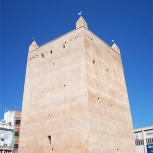
Torrent
Located in eastern Spain, Torrent is a city of 85,000 people that lies inside the metropolitan area of Valencia—whose centre is just 7km away. In fact, the cities are joined by two lines of Valencia’s metro network. Founded in the 13th century, its main landmark is a 30-metre high medieval tower built by the Moors. The city’s economy is based on agriculture and services. Unemployment, as in many other areas of Spain, is high—at 20%—and there has been a marked change in the population, with immigrants now accounting for 12% of inhabitants. The city’s Roma community, in particular, has been growing. The district of Barrio del Xenillet, where Roma account for 40% of the residents, is the focus of a joint urban development programme funded by the ERDF and the Spanish authorities at a cost of €15 million.
Torrent’s economic and employment situation depends to a large extent on its proximity to Valencia. With a population of more than 800,000, Valencia is the fifth busiest container port in Europe and the biggest in the western Mediterranean.
With the beaches of the Bay of Valencia also hosting a major tourist industry, courtesy of hot summers and mild winters, the service sector accounts for around 75% of all employment in the region. Two public universities and one private university have meanwhile helped to encourage commerce, education, entertainment, media, fashion, science and arts in recent years. The industrial sector, which represents 15%, produces paper and graphic arts goods, wood and furniture, metallic products, footwear and clothing.

